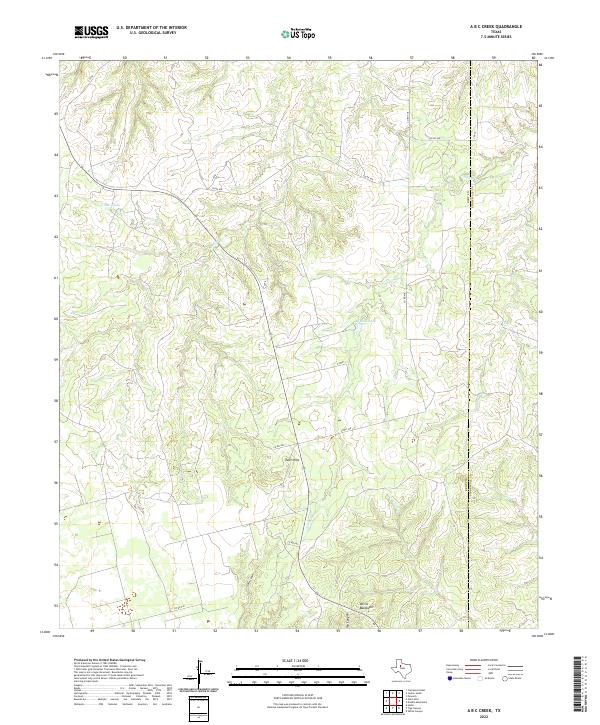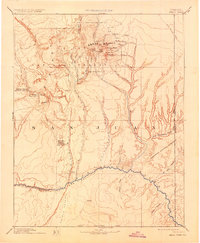Filters: Date Range: {"choice":"year"} (X) > Tags: {"type":"Theme"} (X) > Categories: Collection (X) > Types: OGC WMS Service (X)
12 results (86ms)|
Filters
Date Types (for Date Range)
Types Contacts
Categories Tag Schemes
|
Location data for exploratory, sciencific, or engineering borings conducted statwide since the early 1900s. Drill Core and/or other samples from a large number of these borings are stored in the DNR's Drill Core Library in Hibbing, Minnesota. For more information on the drill core library please vist the DNR's webpage: http://www.dnr.state.mn.us/lands_minerals/dc_library.html
Categories: Collection;
Types: Map Service,
OGC WFS Layer,
OGC WMS Layer,
OGC WMS Service;
Tags: Geospatial,
Minnesota,
Web map application,
ndc_collection

Layered geospatial PDF 7.5 Minute Quadrangle Map. Layers of geospatial data include orthoimagery, roads, grids, geographic names, elevation contours, hydrography, boundaries, and other selected map features. This map depicts geographic features on the surface of the earth. One intended purpose is to support emergency response at all levels of government. The geospatial data in this map are from selected National Map data holdings and other government sources.
Categories: Collection;
Types: Map Service,
OGC WFS Layer,
OGC WMS Layer,
OGC WMS Service;
Tags: Public Land Survey System,
U.S. National Grid,
US,
USGS:6d94af68-1f05-4f9e-9b5a-63f7a05d258b,
United States,
This collection consists of Western Interior Upper Cretaceous ammonites and Inoceramids fossils with stratigraphic and spatial data largely from the Rocky Mountain region of North America. Data is primarily type fossils from the USGS Denver Mesozoic Invertebrate Catalog created and maintained by U.S. Geological Survey (USGS) that as of March 2020 has been transferred to the Smithsonian National Museum of Natural History. Samples collected by paleontologist William A. Cobban during his sixty years of service within the USGS Paleontology And Stratigraphy Branch and Geologic Mapping Team. Approximately 14,595 fossil localities are represented in this collection. In a career that spanned almost 75 years, Cobban fundamentally...
Categories: Collection,
Data;
Types: Map Service,
OGC WFS Layer,
OGC WMS Layer,
OGC WMS Service;
Tags: Campanian,
Cenomanian,
Collection,
Coniacian,
Cretaceous,
In 1967 and 1968 the USGS, in partnership with NASA and the National Park Service, extracted rock core from 13 locations in Yellowstone National Park. Depths of the holes ranged from 215 ft to 1,088 ft and the total drilled footage was 6,802 ft. The deepest hole was drilled in Norris Basin. Research on these cores provided critical understanding of complex geothermal systems that would inform the potential development of other systems, external to the park, as energy sources. These cores are extremely rare due to the many restrictions on sampling in the park. Years later, the cores were used to investigate the origin of some of Yellowstone supervolcano’s lavas using techniques that did not even exist when the cores...
Categories: Collection,
Data;
Types: Map Service,
OGC WFS Layer,
OGC WMS Layer,
OGC WMS Service;
Tags: Collection,
National Park Service,
Yellowstone National Park,
bulk crustal melting,
caldera,
Collections of physical samples and data managed and preserved by the U.S. Geological Survey (USGS). The separate collections are managed by different projects and Mission Areas of the USGS. The collections are distributed across the United States, in various USGS offices. Preservation of some of these collections may be supported by the National Geological and Geophysical Data Preservation Program. USGS strives to publicly expose its materials, data, and other research to further scientific inquiry. Points of contact for individual collections may be contacted to request access to materials and data.
Categories: Collection;
Types: Map Service,
OGC WFS Layer,
OGC WMS Layer,
OGC WMS Service;
Tags: ndc_organization
Geologic samples including hand samples and thin sections that were collected between 1955 and 1956 by Helen Foster and Harold May during the geologic mapping of the Pacific islands of Ryukyu that extend southwest from Japan. Most of the samples were collected from Ishigaki Island and were analyzed to interpret the geology of Ishigaki in USGS Professional Paper 399-A. Ruth Deike of the USGS Geologic Division began an inventory of the samples and thin sections in 2007, but the samples were soon after sent to the Core Research Center for storage. The inventory of the samples was completed by Chris Stuckey of the Core Research Center with a total of 807 hand samples and thin sections. Supplementary data has been added...
Categories: Collection,
Data;
Types: Map Service,
OGC WFS Layer,
OGC WMS Layer,
OGC WMS Service;
Tags: Collection,
Ishigaki Island,
Japan,
Ryukyu Islands,
completed,
Since its inception in 1879, the USGS has collected and preserved geoscience data and sample collections, which include millions of paleobiological specimens stored in USGS facilities and at the Smithsonian Institution National Museum of Natural History (NMNH) in Washington, D.C. As one of the largest paleontological collections in the world, the USGS paleontology collection is invaluable, as many specimens may no longer be collected due to high field collection costs or inaccessibility to sampling sites, which have been restricted, urbanized, or modified via landscape processes. The USGS Denver Paleontology Collection includes ~1.2 million specimens stored in 1000 Smithsonian museum cases. The primary collections...
Categories: Collection;
Types: Map Service,
OGC WFS Layer,
OGC WMS Layer,
OGC WMS Service;
Tags: Colorado,
Paleontological Collection,
ndc_collection
This document compiles the location of mineral deposits and resources in Minnesota containing commodities that were identified as critical minerals by the United States Geological Survey (USGS) and Department of the Interior in their 2022 Final List of Critical Minerals.
Categories: Collection;
Types: Map Service,
OGC WFS Layer,
OGC WMS Layer,
OGC WMS Service;
Tags: Critical Minerals,
Mineral Exploration,
ndc_collection
The Denver fossil algae database were gathered from the inception of Denver Region in 1953 by Richard Rezak. His specialty was algae, carbonate platforms, and off-shore modern reefs. He developed a very useful litho-stratigraphic tool while studying Proterozoic algae and stromatolites in Glacier National Park. This lead to his studies of modern analogs in the Caribbean and South Seas. This collection contains 1001 fossil localities. This collection was originally created and maintained by U.S. Geological Survey (USGS) and as of March 2020 has been transferred to the Smithsonian National Museum of Natural History.
Categories: Collection,
Data;
Types: Map Service,
OGC WFS Layer,
OGC WMS Layer,
OGC WMS Service;
Tags: Africa,
Asia,
Collection,
Europe,
Glacier National Park,
This collection consists of rock samples associated with the research of USGS scientist Alfred Miesch. Miesch was an early contributor to USGS geochemistry research and many of these samples are associated with his research. In 1953 Dr. Miesch began a 33-year career with the Survey. His work in Grand Junction, CO involved research on the distribution of minor elements in association with uranium on the Colorado Plateau. He moved to Denver in 1959 where he continued his work on element distributions in rocks, soils, and plants, ultimately becoming Chief of the Branch of Geochemical Census, which he later renamed Branch of Regional Geochemistry. In this capacity he began a working relationship with scientists in the...
Categories: Collection,
Data;
Types: Map Service,
OGC WFS Layer,
OGC WMS Layer,
OGC WMS Service;
Tags: Collection,
Colorado,
Colorado Plateau,
Geochemistry,
Geology,
This collection consists of rock samples associated with the research of USGS scientist Paul Schmidt. This collection contains one pallet of geological samples, books and papers. Schmidt was a geologist, employed by the U.S. Geological Survey and worked from 1963 to 1984 at the Denver Federal Center. From 1984 to 1994 he worked at the U.S. Geological Survey Mission in Saudi Arabia. He retired in 1995.
Categories: Collection,
Data;
Types: Map Service,
OGC WFS Layer,
OGC WMS Layer,
OGC WMS Service;
Tags: Bedrock,
Collection,
Colorado,
Critical Minerals,
Energy Resources,

USGS Historical Quadrangle in GeoPDF. The USGS Historical Quadrangle Scanning Project (HQSP) is scanning all scales and all editions of topographic maps published by the U.S. Geological Survey (USGS) since the inception of the topographic mapping program in 1884.
Categories: Collection;
Types: Citation,
Map Service,
OGC WFS Layer,
OGC WMS Layer,
OGC WMS Service;
Tags: Public Land Survey System,
U.S. National Grid,
US,
USGS:bb7b145f-8d7f-405b-96ae-348d61172951,
United States,
|

|